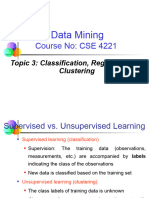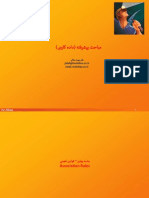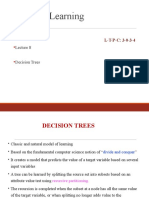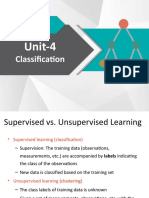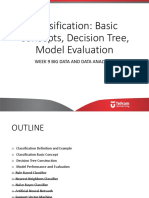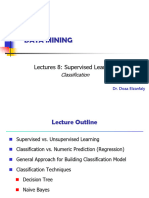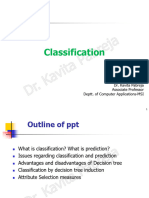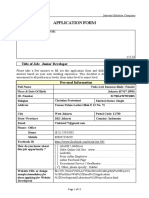0% found this document useful (0 votes)
47 views43 pagesLecture 6 - Decision Trees
This document discusses supervised machine learning for classification tasks using decision trees. It explains how decision trees are constructed from training data and can then be used to classify new test data by traversing the tree from the root node down to a leaf node to make a prediction. Decision trees provide an efficient and accurate classification model that can be applied to problems like predicting loan approvals, medical diagnoses, and more.
Uploaded by
Waseem SajjadCopyright
© © All Rights Reserved
We take content rights seriously. If you suspect this is your content, claim it here.
Available Formats
Download as PDF, TXT or read online on Scribd
0% found this document useful (0 votes)
47 views43 pagesLecture 6 - Decision Trees
This document discusses supervised machine learning for classification tasks using decision trees. It explains how decision trees are constructed from training data and can then be used to classify new test data by traversing the tree from the root node down to a leaf node to make a prediction. Decision trees provide an efficient and accurate classification model that can be applied to problems like predicting loan approvals, medical diagnoses, and more.
Uploaded by
Waseem SajjadCopyright
© © All Rights Reserved
We take content rights seriously. If you suspect this is your content, claim it here.
Available Formats
Download as PDF, TXT or read online on Scribd
/ 43


